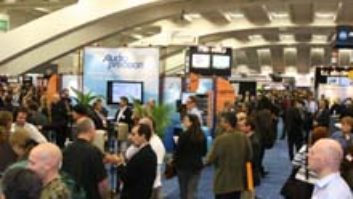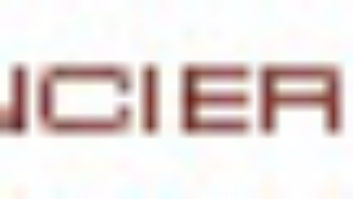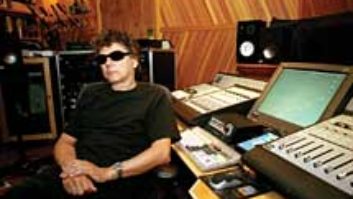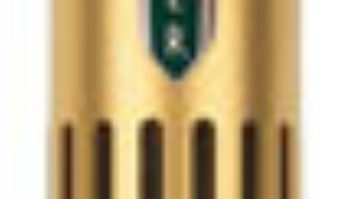At this year’s AES Convention, the Technical Tours will take in three venerable San Francisco post-production houses. On Thursday, November 4, the tour will visit Outpost Studios, just a block from the Moscone Convention Center, while on Friday, November 5, the tour will take in both Polarity Post Production and Crescendo! Studios, which are located just a few streets apart in the waterfront Barbary Coast neighborhood.
Outpost Studios has offered postproduction audio, primarily to independent film clients, for the past 14 years. For this year’s Tech Tour, supervising sound engineer/composer, rerecording mixer Dave Nelson will present some of Outpost’s sound design, music compositions and Foley services.
“We have the only full-size Foley stage in town,” reports Nelson. The presentation at the three-room complex will include a collection of props that feature a selection acquired from the Saul Zaentz Fim Center after working on Foley for Sophia Coppola’s film, Lost in Translation.
“Technology has always been something that I have historically jumped right into,” comments Nelson, who adopted the very first Pro Tools serial board (serial #001) and the first Euphonix console ever made (also serial #001). On the tour, he will be demonstrating MIDI–based sound design applications that supplement his sound effects collection, including Heviosity, which operates inside Native Instruments’ Kontakt 4, and Spectrasonics’ Omnisphere.
“There are some parts about that that’s thrilling; for instance, if something is too long you just shorten the MIDI note. And, especially because I have little bit of facility on the keyboard, I find that sometimes I can run through and perform some sound design and then just tweak it after the fact,” he says.
Nelson’s music background has come to the fore of late. “Using these programs I started doing a little bit of underscoring in films, and now I’d say maybe 30 percent of my income is writing music,” he reveals.
Roger Wiersema, chief engineer/president and co-founder of Polarity Post Production, designed and built multiple rooms at Music Annex before taking them over, with senior engineer, CEO and sound designer Patrick Fitzgerald in 2003. The tech tour will focus on the Michael Blackmer-designed Studio 5, he says, an Avid ICON-equipped 5.1 room with associated Foley pits and iso booth.
The room is an ideal venue for a technical demonstration, says Wiersema. “We’re going to have the Penteo folks demonstrate their PenteoSurround stereo- to-5.1 process. So part of the tour will be demonstrating the Penteo process, and we’ll talk about the facility.”
Studio 5 was the straw that broke the camel’s back for former Music Annex owner David Porter, according to Wiersema. “He built it in the late ’90s, then we had the actors’ strike, the dot-com bust, 9-11, and the work just couldn’t support it. But you couldn’t afford to build that room today, in this economy.”
When Porter saw the writing on the wall, Wiersema and Fitzgerald opted to take over the entire multi-story facility, which also houses Studio 1, another 5.1 room; Studio 2, which is primarily a voiceover recording room and is outfitted with Pro Tools|HD8; and Studio 4, a pickup room for the overflow work. Studio 3 is currently being refurbished.
VO work plays a major role at Polarity Post, which has performed post on Chevron’s talking car spots for 12 years, and worked on 42 Ways to Kill Hitler, a PBS special for which Polarity won several awards. “We’re EDnet affiliates, and we still do a lot of ISDN work. We do ISDN sessions two or three times a day to all parts of the world,” reports Wiersema.
Crescendo! Studios was built by the owners of Russian Hill Recording in 1997 to cater to its advertising clients. “They wanted to provide a space that would give clients up here the same kind of experience that they would expect at a studio in L.A.,” explains senior engineer and technical director Craig Helmholtz, who started at the facility in 1998.
The complex features three rooms, all running Pro Tools, with one equipped for 5.1 work. “That room used to be leased by Earwax,” recalls Helmholtz. “When they moved out we took it over and upgraded it to 5.1.”
Advertising has been focus at Crescendo! since it opened. “But advertising has changed a lot since then,” acknowledges Helmholtz. “Back then, we mostly worked on TV and radio spots; now we do lots of digital or online advertising work. They can be similar productions, where you’re working to picture, but it never ends up on TV; it’s for the web. We’re doing sound design and recording dialog for websites as well. We do a few other things—books on tape, ADR work sometimes. So it has diversified over the years.”
The gear has also changed but, Helmholtz notes, “We have a Fairlight controller at the ready if for some reason somebody opens something up from 1998!”




